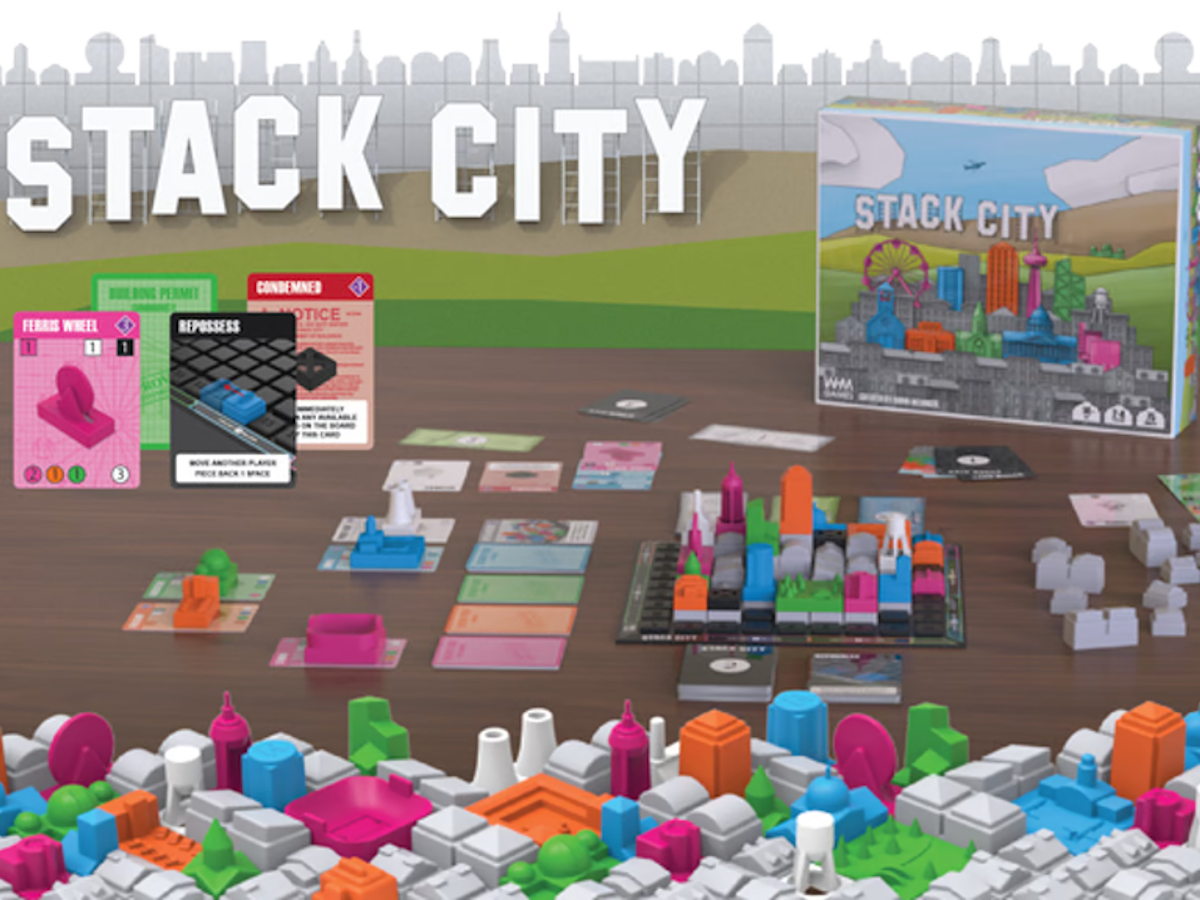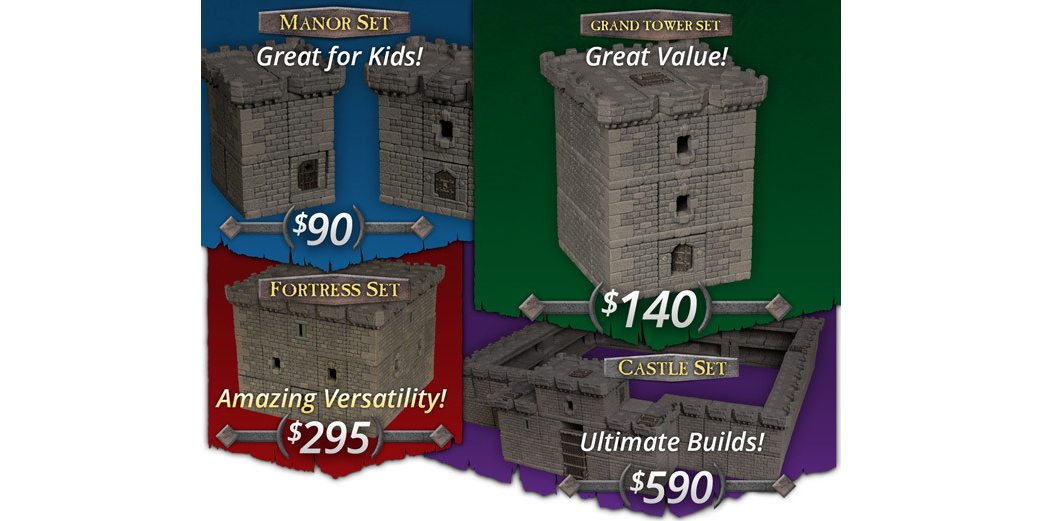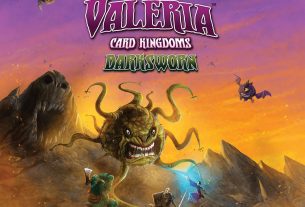Build your way to the top in this 3D city building experience
What Is Stack City?
Stack City is a competitive game for 2 to 4 players, ages 14 and up, and takes about 75 minutes to play. It is planned to launch on Kickstarter in February, and currently the pledge level has not been set for a copy of the game. It is the first game from designer Quinn Biesinger and I was provided with a preview copy to review before the Kickstarter. In Stack City, you and your competitors take turns placing building pieces on a gameboard, following various placement rules. As the city takes shape, more powerful buildings come into play that increase your income and ultimately give you economy points to win the game. I first played Stack City at the SaltCON board game convention in Layton, Utah, and was excited to try it out with my game group before it hits Kickstarter.
Stack City was designed by Quinn Biesinger and will be published by WHM Games.
New to Kickstarter? Check out our crowdfunding primer.
Stack City Components
Note: My review is based on a preview copy, so it is subject to change and may not reflect the final component quality.
Here’s what comes in the box:
- Central game board
- 4 Player pieces in 4 separate colors
- Building permit cards in 4 separate colors
- Actions cards
- 12 Enterprise cards in 4 separate colors
- 4 Starting Enterprise cards in 4 separate colors
- 3 Utility cards
- 1 Key to the City card
- Paper money, in 1, 3 and 5 million denominations
- 19 Enterprise buildings – 3 white and 4 of 4 separate colors
- 2 Condemned building markers
- Gray city building pieces in 1 and 2 space variants
The game components in the preview copy were 3D printed, so had the familiar ridges that you get with 3D printed objects. The quality was good enough to understand the buildings and the final products should be similar.
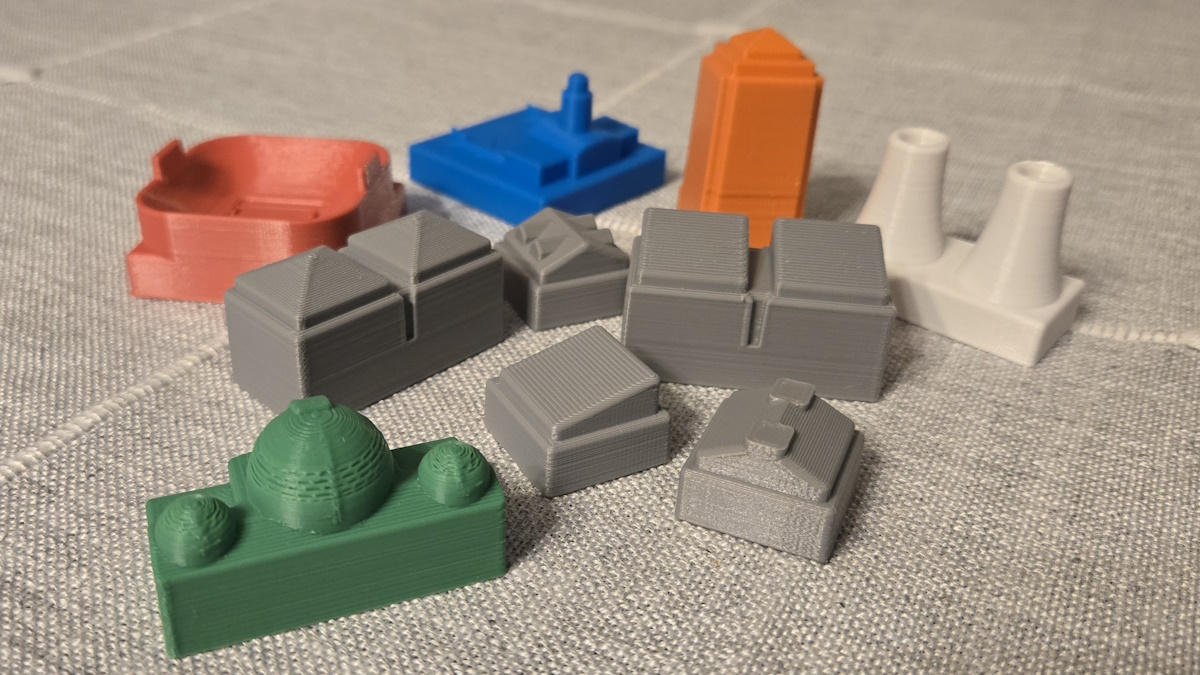
The board is black plastic injection molded to the right shape, and is a nine by nine grid that you can place the building pieces on. The inner seven by seven grid is used for the buildings, and the outer squares running around that are used as the score track for your pieces during the game. There are stickers on the outer edge of the board showing how much money you collect in rent based on the location of your piece.
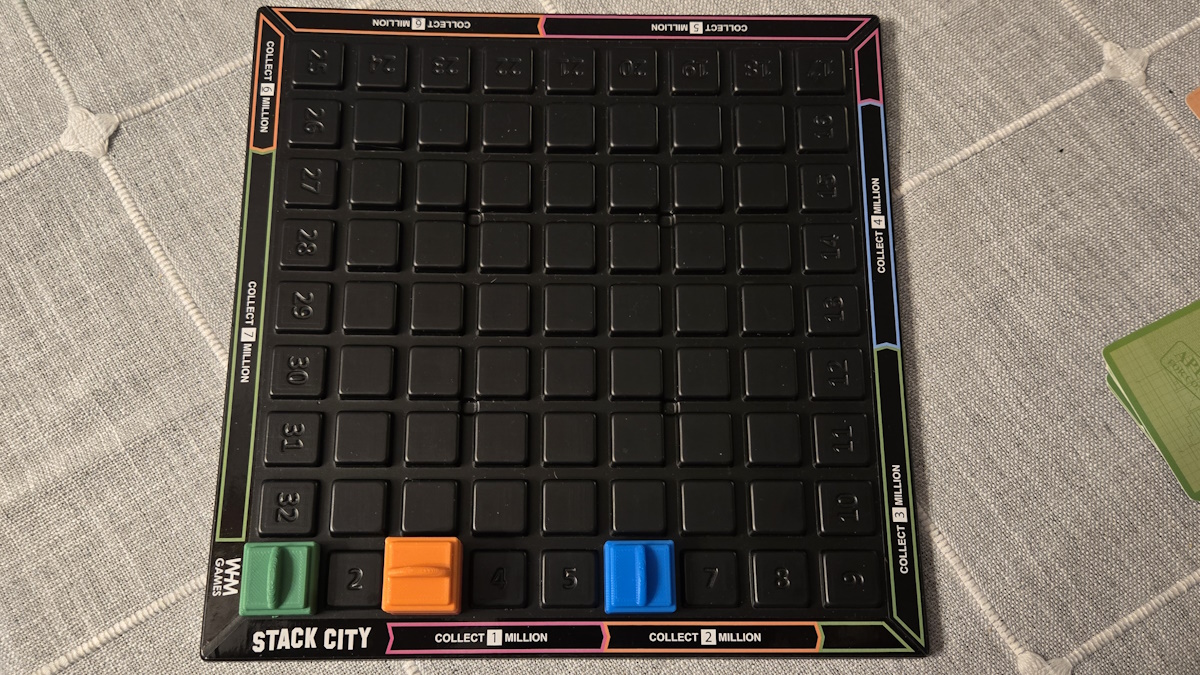
The enterprise buildings are a combination of a card and a building token to place on the city board. The card describes the benefits the card gives you each turn, as well as the cost of purchasing the card, and there is some flavor text on the back talking about the building. There are four enterprise cards used as the starter buildings for each player and the rest are set up in a reserve area and can be purchased throughout the game. There are also three utility building cards that are set up in the enterprise area that you can purchase as well.
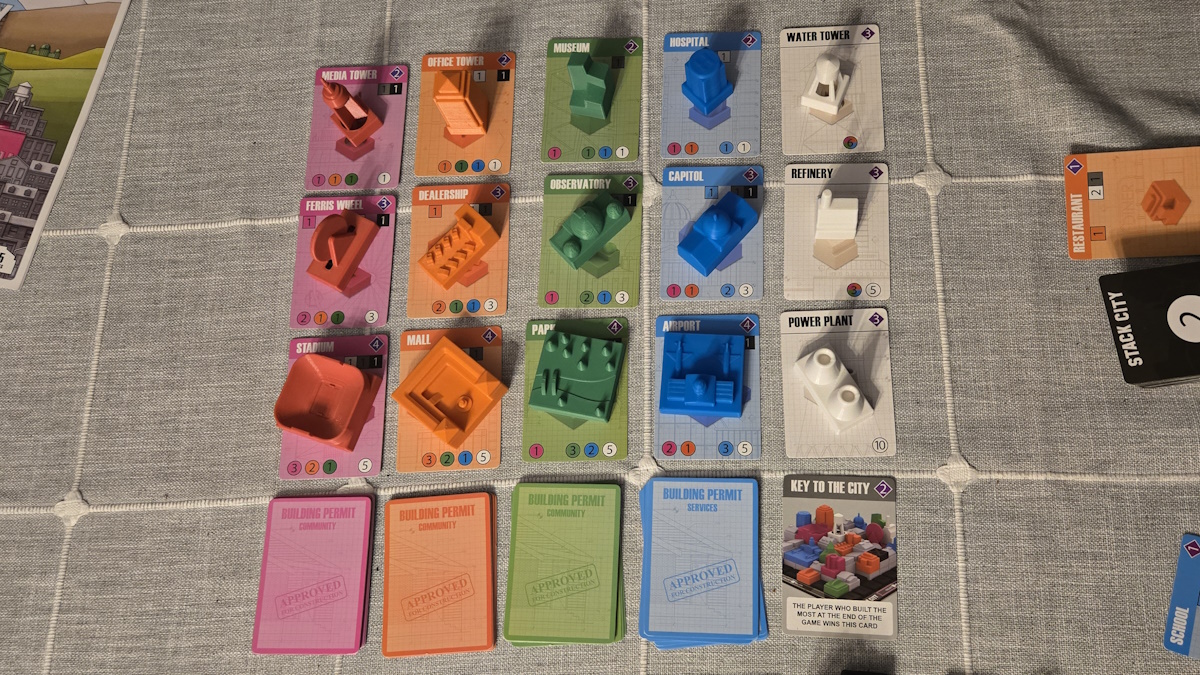
The enterprise cards are purchased and built with building permit cards. There are four different colors of these cards, and you will need to acquire and trade them in order to purchase and build your enterprises. The action cards are black-backed cards that offer various actions, money, building permits and other perks throughout the game. There are several negative action cards that must be played immediately and can impact you and the other players. The functions of the cards are pretty self-explanatory, and there are pages in the manual dedicated to explaining how to use them if there are questions. I did feel that it took a few plays to really get the feel for the different types of cards.
One confusing area that becomes more clear with play, is that there are building permit cards, and then there are building permits that you can obtain as action cards. This can be somewhat confusing, because you can trade building permits, but not action cards, so you will want to keep them separate. But now that you are keeping them separate, it can be easy to forget you have the action card version, and you may miss some enterprise building purchases. As mentioned, with a few plays, you develop your own method of remembering what cards you have.
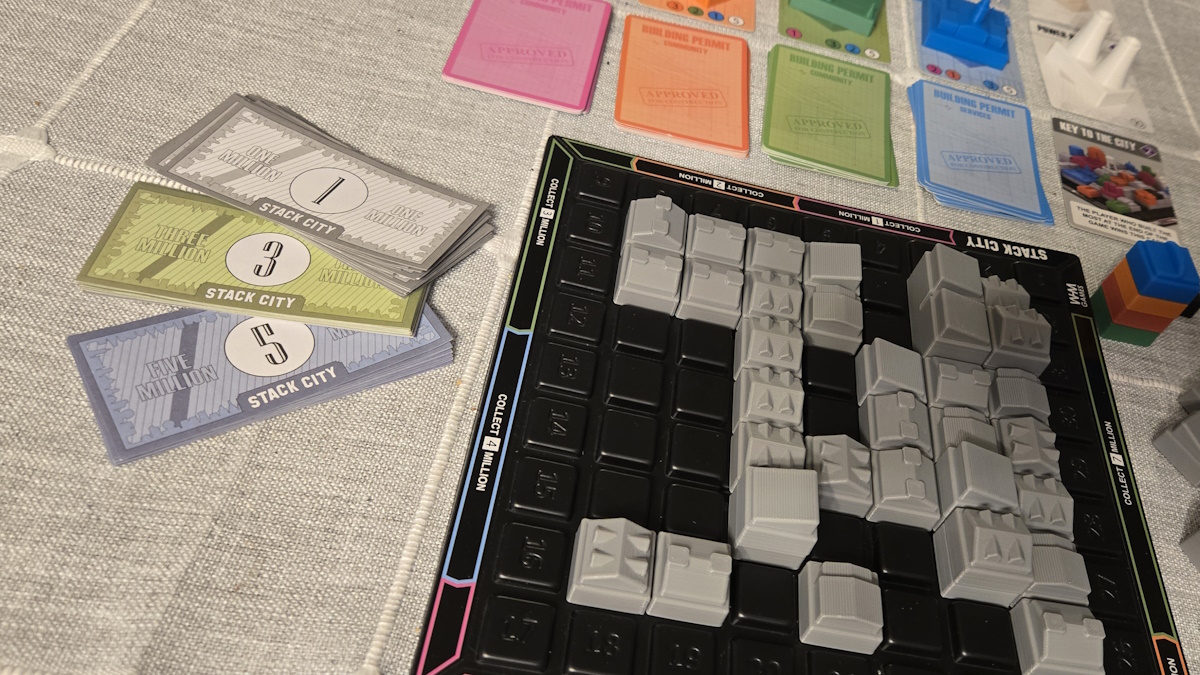
The money is pretty standard, and comes in denominations of one, three and five million dollars. In the preview copy I played, I appreciated the heavier feel of the money. It was not the flimsy monopoly money we all know, and I hope the paper quality can be kept into production.
Overall, for a preview copy of a game from a first time developer, I was happy with components and iconography. I think there is room for tweaking some art and design pieces for better consistency, but this does not detract from gameplay. There was no component organization in the box I had, so I hope that will be something included in the final design, so all the plastic pieces aren’t just rattling around in the box.
How to Play Stack City
The Goal
In Stack City you are playing as one of four enterprises building your city. You are vying with the other players to place your buildings and obtain new enterprise buildings that you can build throughout the game.
Setup
In order to play Stack City you will need to set out the board game and set up the enterprise building area. You line up the cards according to their value, and put their associated building on top of them. Also tuck a random action card under each enterprise building. You will get this action card when you purchase the building! The building permits are set next to the board, along with action cards and the money.
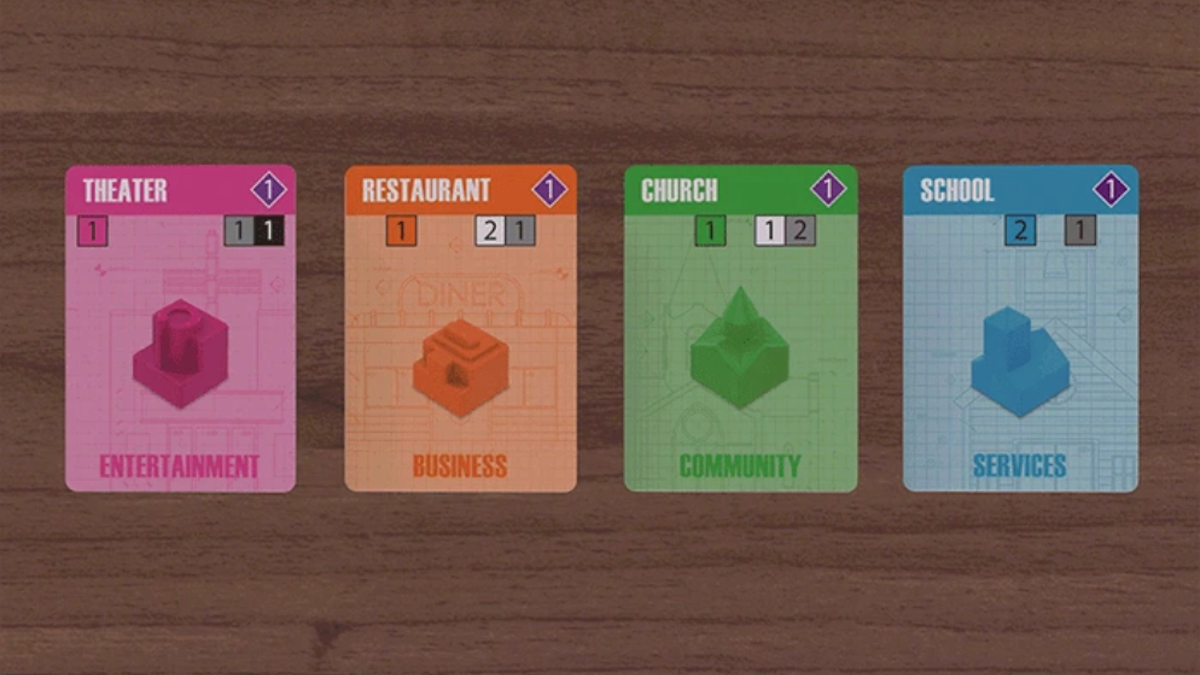
Each player is randomly assigned the color they will be playing, and takes their starting enterprise building and card. There are variants presented in the manual for two and three player games, which include shrinking the play area, and in the case of a two player game, removing some of the more expensive enterprise buildings.
Gameplay
Stack City is played through a series of rounds until one player achieves 32 points, indicated by their player token reaching the 32 spot on the game board. The first turn involves each player taking the building permits, money, action cards and houses awarded to them by their starting enterprise card, placing those on the board (including their enterprise building, which must be placed on top of a gray common building) and moving to the next player.
Subsequent rounds start out similarly, with a few additional steps added. Each turn is composed of three phases – Rent Phase, Reward Phase and Action Phase. In the Rent Phase, the player collects the amount of money indicated by the location of their player piece on the game board. There are stickers along the outer edge that grant you between three and seven million in rent each turn.
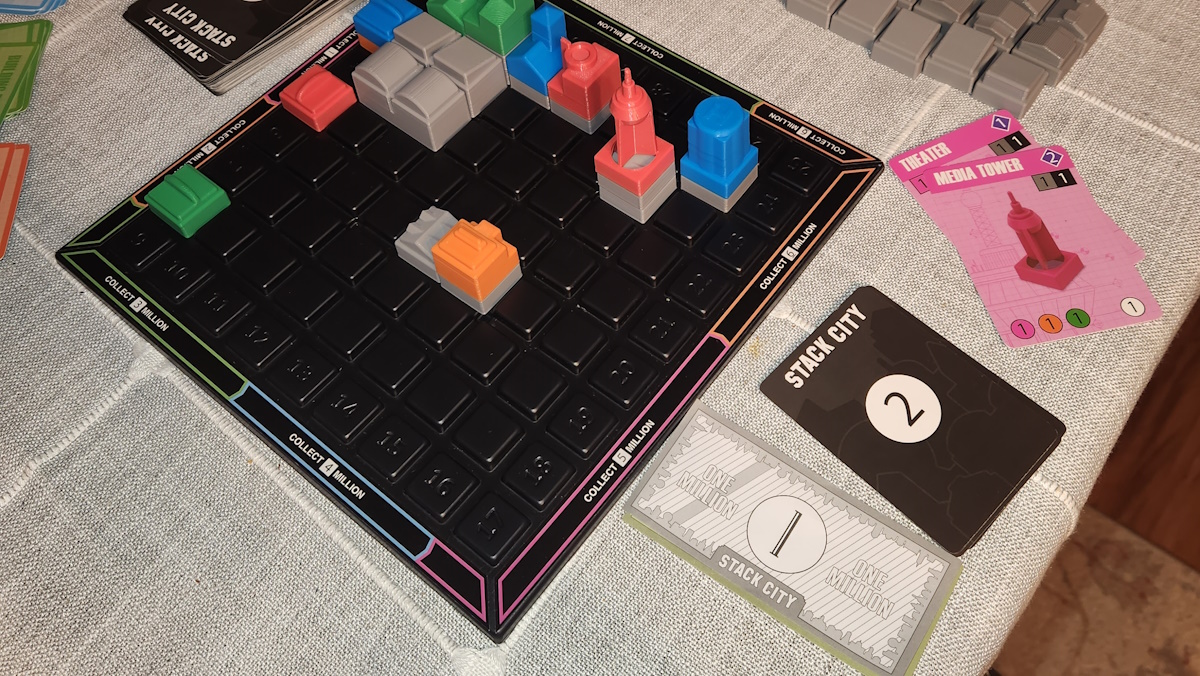
Once you have collected your rent, you start the Reward Phase. In this phase, you gain rewards indicated by the number tiles on the top of your enterprise cards. These rewards can be different colored building permits, money, action cards and houses. You collect the quantity shown in preparation for your action phase. Houses comes in two sizes – a one square house and a two square complex. You choose your houses and complexes based on the total number of buildings your enterprise cards give you.
Finally, you are into the Action Phase. There are several things you can do in this phase, depending on what you are holding. The first task you are likely to complete is placing your common buildings you were awarded during the Reward Phase. There are placement rules for these that are covered in the manual with some good examples. Ultimately, common buildings can only be stacked four tall, and you may run into some placement problems later in the game.
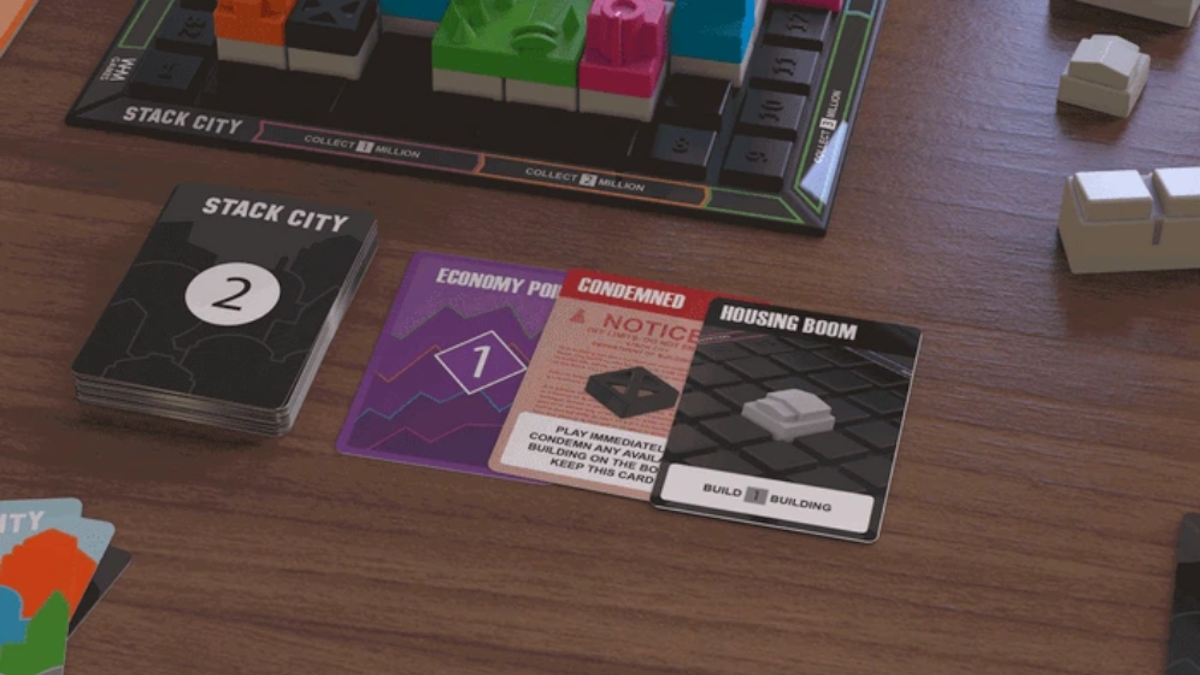
You can also buy and place one enterprise building per turn during the Action Phase. Each building has a building permit and possibly monetary cost listed at the bottom of the card. If you are able to purchase the building, you can take it and its associated card and bonus action card. You then immediately place the building on the game board. The placement rules for enterprise cards are explained in the manual as well. Take note that if you cannot place an enterprise building due to no suitable locations being available, you cannot purchase it this turn!
You can also buy action cards for the value in millions listed on their back. Any action cards you buy or acquire may not be used the turn you get them. Cards that you had when you started the turn can be used. These include cards that allow you to build another common building, or steal a building permit from another player. Action cards have no value at the end of the game, so you will want to play them often!
Finally, you can trade or buy building permits with other players or the permit office. If you need a certain color building permit and you don’t have it, you can purchase one permit per turn for four million dollars. You can also trade two permits of any type for one permit of another type with the permit office once per turn, allowing you to turn those unusable permits into ones that you need. You can also trade with other players, trying to obtain the permits you need through trades of permits and money. You cannot trade action cards, and you can make as many player trades each turn as you like.
As you build your buildings, you will be moving your player token along the scoring track, one spot for each square you have built on this turn. Before you end your turn be sure you have moved your token appropriately, because that dictates the amount of rent you will collect at the beginning of the next turn.
Game End
Play proceeds in this manner until one player reaches the 32 spot on the score track with their player token. Once that happens, you will complete the current round and end the game. You will want to keep track of where players are on the scoring track, because it will alter your strategy at times.
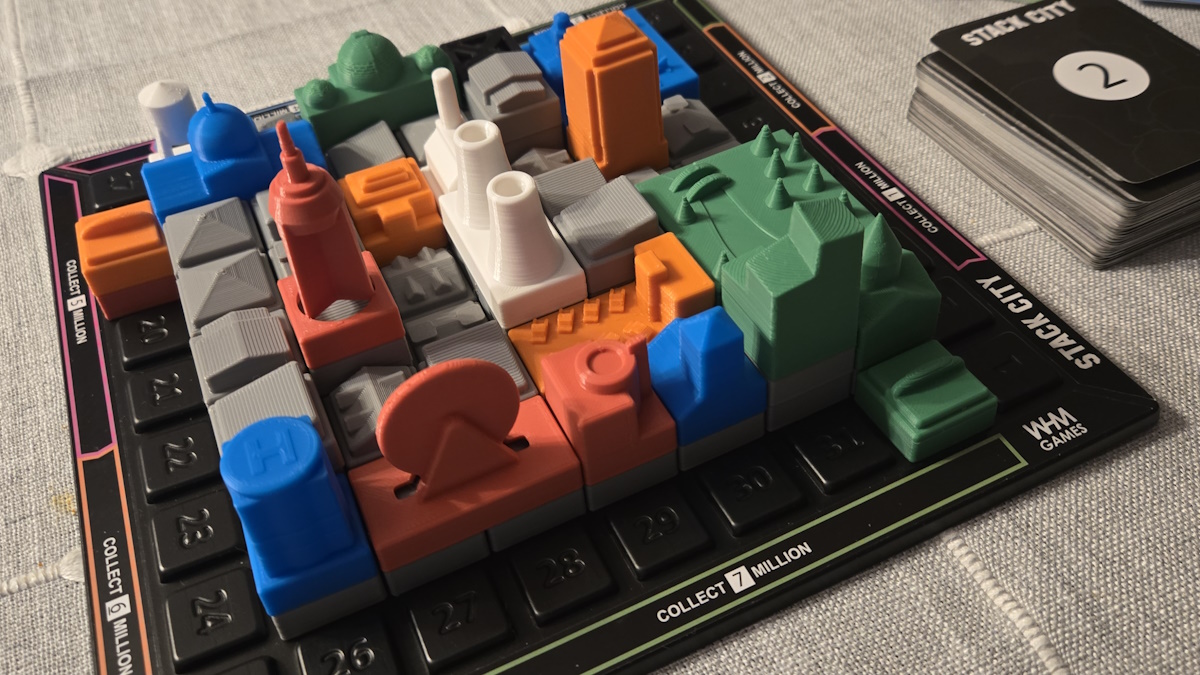
Once the game is over, the player that is further along the score track takes the Key to the City card, worth 2 economy points. All players add the economy points given to them by their enterprise cards (indicated by the number in the diamond at the top right of the card). If you have leftover money and building permits, you add those up, dividing by five, and add that to your final result. This is an area that does need some clarification in the manual, so I assume that will happen at the Kickstarter proceeds.
Why You Should Play Stack City
I enjoyed playing Stack City with the designer at the SaltCON board game convention when I was first introduced to the game. As with any game, there was some initial confusion, especially with the building permits and how they looked. As with most games though, after playing a few rounds it became much more clear and I was better able to balance building permits and action cards as building permits. I really don’t like mixing card types in my games, so I had to come up with my own method for managing one type of card in two locations.
When I got the game to review, I had forgotten about that feeling, and as I set up the game, I was worried about experiencing that again. But it didn’t happen. I think after reading the manual, setting up the game, and coming in closer contact with the game components, it felt more natural. Granted, there were still a few times I forgot I had a building permit with my action cards, but overall, it flowed much better.
Stack City is a good game to play that is accessible to all levels of gamers. It isn’t going to offer the deep complexity some gamers want, but it is easy enough to play, and easy enough to teach, that it fills a great spot for my gaming group. We played through several times and everyone enjoyed it, especially how it seems to build and then become much more strategic toward the end. By that time, people were invested enough that everyone was excited to see the outcome. The pacing of the game always felt very natural as well. In the plays we did do, we found that the pink player usually ended up in the top and the blue player usually ended up in the bottom, so perhaps some more balancing will be done as the game goes toward production.
Overall, I would encourage you to take a look at Stack City and see if you think it is for you. While a bit lighter on the strategic side, it offers a good tactile experience and a good paced game.
For more information or to make a pledge, visit the Stack City Kickstarter page!
Click here to see all our tabletop game reviews.
![]() To subscribe to GeekDad’s tabletop gaming coverage, please copy this link and add it to your RSS reader.
To subscribe to GeekDad’s tabletop gaming coverage, please copy this link and add it to your RSS reader.
Disclosure: GeekDad received a copy of this game for review purposes.

